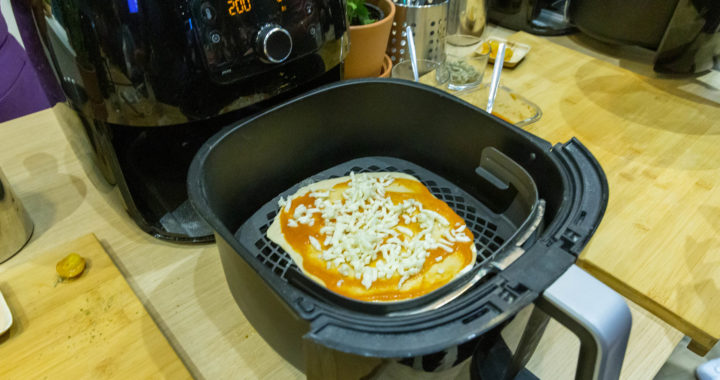It was at a consumer electronics fair held in Berlin in 2010 when Philips Electronics introduced a brand of convection oven called “Airfryer.” Other manufacturers have since come up with similar products with identical features and designs.
Philips heralded the beginning of the air fryer craze. About 40 percent of homes in the United States had one in 2020. But what exactly is an air fryer and how does it work? What are the advantages and disadvantages of cooking in an air fryer?
Background: Understanding Air-Frying
An air fryer is essentially a small convection oven designed as a countertop kitchen appliance that can stimulate deep-frying without submerging the food in oil. It has been marketed as a healthier and more economical alternative to frying.
However, despite its name, it does not actually fry food. Note that frying involves submerging food in hot oil at temperatures between 140 to 165 degrees Celsius to induce a browning reaction called the Mallard effect. This what gives food flavor and texture.
Air fryers mimic this phenomenon by using radiant heat. The cooking process is somewhat similar to baking from a conventional convection oven. However, the difference is that air fryers produce hot air and circulate it at high speeds inside a contained space.
The rapid circulation of hot air effectively produces a crisp layer on food via browning reactions such as the Mallard effect. The transformation of raw food into cooked food is fundamentally similar to deep-frying and other forms of cooking.
Most designs have a barrel-like appearance that includes a top section that holds a heating mechanism and a fan. Foods are placed on the bottom section called the food chamber that resembles a basket. Other designs resemble toaster ovens and pressure cookers.
Cooking Advantages: Pros of Air Fryer
The advantages of an air fryer have made it appealing to residential consumers, especially homemakers and younger consumers. Below are the specific benefits and applications:
• Versatility and Variation: There are different kinds of food that can be cooked and meals that can be prepared through air-frying. These include slices of meat such as pork chops and chicken wings, homemade French fries, roasted vegetables, and small home-baked pastries such as cookies and cupcakes.
• Healthier Cooking Alternative: Another major advantage of air fryer, especially when compared to cooking processes that involve frying using oil, is that it removes the harmful effects from submerging food in hot oil, cuts calories to 60 to 80 percent, and reduces the consumption of unhealthy fat.
• Time Efficiency: Air-frying food takes less time than deep frying or baking using a conventional convection oven. It is also important to note that air fryers are straightforward. They are easy to use. Furthermore, they are easy to clean. Their small footprint means they do not consume large space and are easy to store.
• Safer Kitchen Appliance: Air fryers are self-contained kitchen appliances. There are no risks from splattering oil that comes from deep-frying or accidental burns from touching the hut surface or parts of a conventional convection oven. It does not produce electromagnetic radiation, unlike microwave ovens.
Cooking Disadvantages: Cons of Air Fryer
One of the major criticisms of an air fryer is that is simply a gimmicky convection oven Some reviewers have noted issues and limitations. Take note of the following:
• Limited Capacity: Remember that this appliance is relatively small. The largest model can only cook food good for two to three people at most. Households or families with a large number of members ranging from four or more are better off using large convection ovens or cooking their food using electric or gas-fired stoves.
• It Can Be Uneconomical: Preparing food for large households using this kitchen appliance would mean cooking in batches because of its limited capacity. This can take not only more time but also consume more electricity or energy input when compared with food preparation using large ovens or pots and pans.
• Taste and Consistency Difference: Another disadvantage of an air fryer is that air-fried food have different taste and consistency compared with their deep-fried counterparts. Note that oils or fats used in frying or other cooking preparation using a stove add not only texture but also rich and distinct flavor.
• Burn and Dry Food: Those unfamiliar with air-frying or first-time users of air fryers are susceptible to either undercooking or overcooking their food. Overcooked foods are either dry, burnt, or both. Different brands have different modes or settings. Air-frying involves experimenting with different food and settings.
• Other Limitations: Another notable downside to air-frying is that it is not a one-size-fits-all cooking process. Users cannot prepare soups and stews or bake cakes using this kitchen appliance. They cannot also prepare bacon and battered food and expect them to have the same taste and consistency as their deep-fried counterparts. Photo credit: Marco Vench/Flickr/CC 2.0





